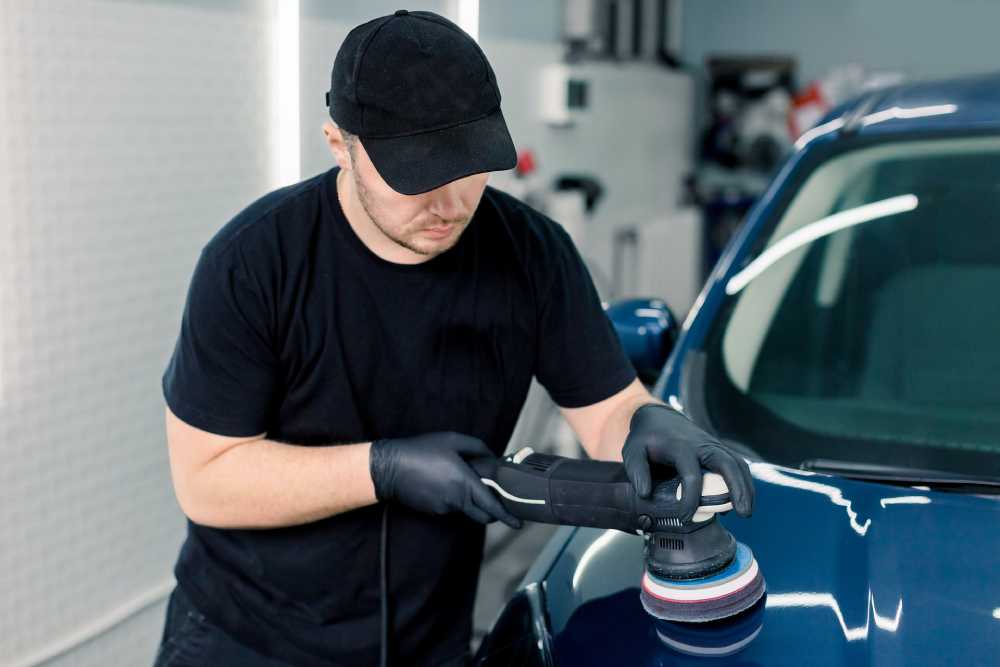Picture yourself cruising down the sunlit highway, and as you glance at your car’s reflection in a shop window, you’re met with a flawless paint job that leaves no room for imperfections. It’s the ultimate aspiration, isn’t it? Yet, the question arises: how can you attain this level of perfection, particularly when a bothersome dent tarnishes the vehicle’s aesthetics? Let’s embark on a journey to uncover the scientific intricacies of achieving the ideal car paint finish and delve into the seamless dent-repair process offered by PDR.
Understanding the Basics of Car Paint
Car paint serves a dual purpose, not only enhancing the aesthetics of a vehicle but also providing a protective shield against various external factors such as UV rays, dirt, and moisture. Achieving a flawless finish requires a comprehensive understanding of the paint’s chemical composition, how it interacts with the car’s surface, and the correct application techniques.
Surface Preparation: The Foundation of Flawless Paint
Surface preparation is the fundamental step in achieving a superb paint job. Its significance lies in ensuring that the paint adheres properly and results in a smooth and uniform appearance. This critical stage involves a series of meticulous procedures, starting with a thorough washing of the car to eliminate any dirt, grime, or contaminants that may interfere with paint adhesion.
Subsequently, any imperfections on the car’s surface, such as scratches or blemishes, are carefully sanded down to create an even and uniform canvas for the paint. Following this, a primer is applied to further enhance adhesion and provide an optimal surface for the paint to bond with. All these steps collectively ensure that the car’s surface is clean, smooth, and fully prepared to receive the paint, laying the groundwork for a flawless finish.
Different Types of Painting Techniques
Traditional Spray Painting
The most widely used method for applying car paint is traditional spray painting. This technique involves the use of a specialized spray gun to apply multiple thin coats of paint to the vehicle’s surface. It is preferred by professionals due to its ability to ensure even distribution and a smooth finish.
The spray gun allows for precise control over the paint application, resulting in an aesthetically pleasing and uniform appearance. Traditional spray painting is known for its effectiveness in achieving a professional-grade finish, making it a popular choice for car refinishing and customization projects.
Paintless Dent Repair (PDR)
One of the marvels in the world of car maintenance, PDR, stands out for its innovation and effectiveness. Ever wondered, “how does paintless dent repair work?” In a nutshell, PDR is the art of massaging out dents from the backside of a car’s panel.
This technique maintains the original paint job, making it the ideal solution for hail damage or minor dents without compromising the paint’s integrity. If you’re curious about the effectiveness and PDR cost, this detailed guide on paintless dent repair for hail damage offers in-depth insights.
Custom Paint Jobs
Custom paint jobs offer a captivating avenue for individuals and businesses alike to express their distinct personality or brand identity through their vehicles or other objects. This artistic endeavor opens up a world of possibilities, allowing for the creation of one-of-a-kind designs and patterns that stand out from the ordinary. Whether you’re seeking a sleek and futuristic appearance with metallic finishes or prefer the understated elegance of matte textures, the spectrum of options available is virtually boundless.
When it comes to custom paint jobs, the only limit is your imagination. You can opt for vibrant, eye-catching colors that draw attention wherever you go or choose a more subtle, refined palette to reflect your individual style. These personalized creations go beyond mere aesthetics; they become a tangible representation of your uniqueness and creativity.
Techniques for Even Application
Whether it’s traditional or custom painting, the key is even application. Using consistent pressure, maintaining a uniform distance from the spray gun to the car, and overlapping each pass by 50% can prevent paint runs and ensure a seamless finish.
Drying and Curing
Drying and curing are crucial steps that often get overlooked. While drying is the process of the solvent evaporating from the paint, curing is the paint’s chemical reaction to harden and bond with the car’s surface. Both steps are pivotal in ensuring the paint’s longevity and shine.
Achieving Flawless Finishes: Polishing and Buffing
To achieve that show-stopping shine, polishing and buffing are your final steps. Polishing helps remove minor imperfections and scratches, while buffing brings out the paint’s shine, ensuring a mirror-like finish.
Conclusion
Achieving that flawless car paint job isn’t just about slapping on some paint. It’s a calculated process that takes into account surface preparation, understanding different painting techniques, and ensuring proper drying and finishing.
And when dents come into play, understanding how PDR fixes dents without damaging the paint can make all the difference. It’s this combination of art and science that transforms a vehicle into a head-turning masterpiece on wheels. If you’re eager to learn more about the nuances of paintless dent repair, this article on paintless dent removal is a must-read.



